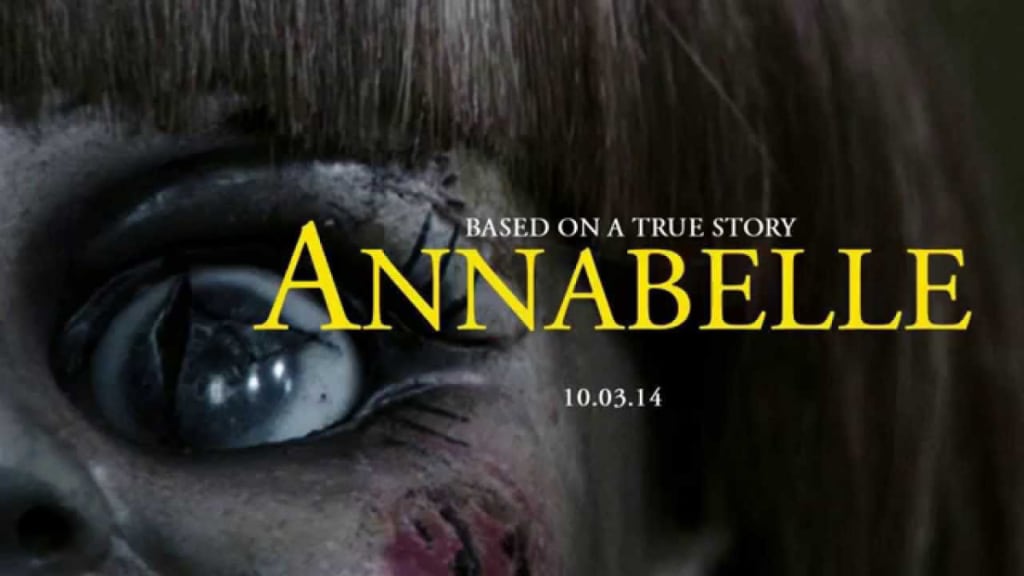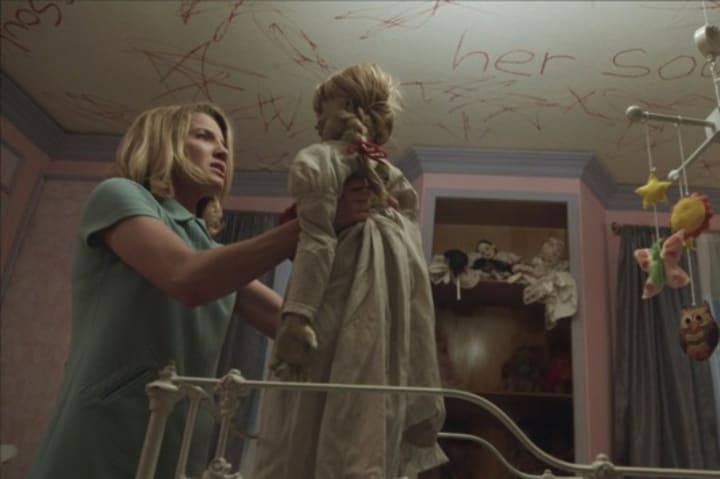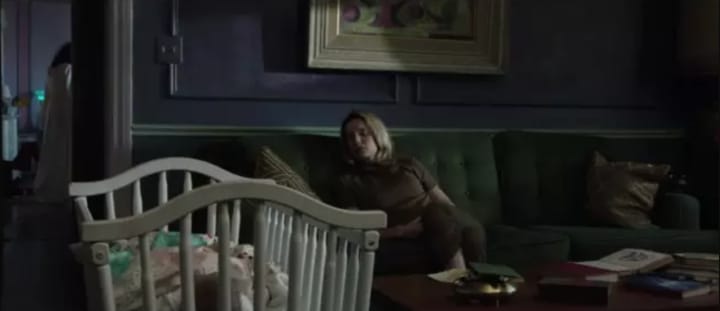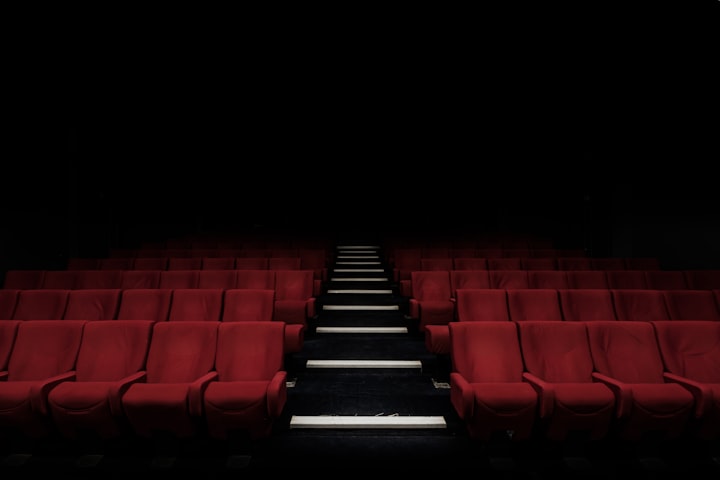A Filmmaker's Guide to the Horror Techniques Used in 'Annabelle'
Study, Experience, and Analysis

(This article analyses the film Annabelle and, in order to gain the best insight, it is recommended that you watch the film through at least once).
Annabelle is a strange part of The Conjuring Universe as it doesn't contain many of the main characters for too long; instead, it is its own story that goes through how the doll ended up in the Warren Museum. The film has many scenes of abject terror and ends up being a highly effective horror film to study. Let's look at three themes to give reason to the effectiveness of the film:
- Shock
- Violence
- Ghosts
We're going to look at the frame and scenes, noticing how they make the film look as horrifying as some believe it is. So, let's go forth and analyse our film.
1. Shock

A Still from Annabelle
The shock of the film opens as a splatter of blood in the neighbouring house that opposes the previously calm notion of the film. Look at this scene in which the shock truly begins by the shocking item(s) entering the house in which the main character is in.
Here's a tip: it's important to have the shock enter the space of the main character after you've established that it actually happens. This means that the shock can have more of an effect as it keeps moving closer into the circle that the audience feel empathy for.
Here's the scene to watch:
Here we have the characters of shock enter the space of the main character after they've been established somewhere else. This is not supernatural, it is physically someone breaking into someone else's house. Look at how the darkness compliments the dashes of blood that can be seen on the clothing—it is quite extreme.
The tracking shot that follows the main character through her house is highly effective as it builds the tension without too many cuts.
Here's a tip: if you're looking to build tension, don't have too many cuts. The more cuts you have, the more you're cutting the scene up into chunks and therefore, lowering the tension of each splice of film. You need smooth shots lasting a little longer than normal. You don't need it all to be done in one shot. Just don't go crazy on the editing floor.
The shock heightens because it is the audience and not the character that see it to begin with. The man standing behind the main character cannot be seen by them and is, therefore, the shock for the audience as the main character is in terrible danger.
Here's a tip: if you want to heighten this effect, keep the character in the background out of focus for a few seconds. It will give the feeling of unfamiliarity because the audience can't actually see them. In the case of this film, it uses the fact that all the lights are out in the house because of the fact it's night-time.
Let's move on to the next theme: violence.
2. Violence

A Still from Annabelle
The violence in Annabelle is not so much physical as it is implied. We know about the physical part—most of the violence happens towards the mother of the newly born child. But, the implied violence (the violence of character) is more difficult to recognise.
Let's take a look at this frame and how it implies violence. Nothing is actually happening with the doll right now. It is not causing any violence by hurting anyone, but it is. On the ceiling it is not only a coincidence that "her soul" is scribbled in red crayon along with satanic symbols and weird etchings that connote blood splatters.
The next thing that connotes violence is the state of the doll. Now, if you were to look at this frame without watching the film, you could still guess that it was the doll; that is because of the state her clothes are in. Her clothes are blackened, which when the doll was received, was not so. The violence of the room only matches one character in that room and must therefore be a violence of character.
Let's have a look at another frame:
Frame 2

A Still from Annabelle
If you look at the violence in this scene, it is far more physical but still remains a part of the implied violence/the violence of character. The doll is being held by the person who is most attached to it whilst they are splattered with blood.
Notice how the light source is throwing the shadow behind her and thus, it lights up the doll. We don't see much of the girl, but we definitely see the doll's face as it is the most important part of this frame.
Then we have the weird etchings in blood on the wall. These etchings of blood connote a violence that the main characters are not a part of. This is important as it gives some background and understanding of the film. This symbol being seen over and over again can be used to create an even deeper meaning to what happened to the doll and this girl. The reason it is violent is because it's almost always drawn in blood. The closer it gets to the character and the more the character gets into understanding it, the more dangerous the space becomes.
Here's a tip: to create a dangerous space, you probably want to use this method. Have something dangerous or unknown established outside the world of the character and then, progressively, move it closer to the character and move the character closer to it so that eventually it becomes inescapable. This will make sure that there are lesser "loopholes" in the story and no real psychological jumps.
3. Ghosts

A Still from Annabelle
Ghosts, demons, etc., whatever you want to call them (but we're calling them ghosts) are very prevalent in the film Annabelle. The soul of the ghost attached itself to the doll, causing the doll to become haunted. Now, if we look at how that works in the film, the ghosts are nearly always malevolent and mostly, we don't have an excuse. But in this case, we do. In Annabelle, the ghost character was once part of a satanic cult and therefore haunts the family that has the doll. The doll requires a human soul so that the malevolent spirit can move on.
I know this sounds a bit far-fetched but it's better than having no backstory at all. The most important thing to recognise is that this ghost appears when they believe nobody else is watching and their main purpose is to take the doll (and a soul).
Let's take a look at this frame then. In the frame above, we can see the mother and the baby asleep; the doll is nowhere to be found. Of course, the doll mostly stays in the baby's bedroom and doesn't really get to come out unless off its own accord.
Notice where everything is placed in this first room. The baby's cradle is in the middle of the room with the mother asleep on the sofa. The sofa is placed so that the mother couldn't possibly see out of the door. The natural light source from a window throws a bit of light on to what's happening outside of the door and therefore, the audience can see it clear enough to know what it is. This is along with a very small lamp in the distance; it lights up what's happening in the baby's room.
Right through the door and down to the baby's room is an amount of depth which seems very small. This makes the ghost character look closer than they actually are. The door is slightly closed to make it look like the doorway of the first room is also the doorway to the second. Again, this is for the effect of making sure there is not much depth and therefore, danger is created as the ghost character is perceived to be very near.
Conclusions:
The film has many different themes and parts that add to the experience. If you wanted to analyse this in further detail, you could look at the following themes:
- Space and Depth
- Darkness
- Haunting Inside, Haunting Outside
- Friends and Allies of the Main Character
- Children
And there are many, many more. Annabelle is one of those films that not only takes the character of a troubling situation (Annabelle Higgins) but also takes the time of troubling situation (hence, why Charlie Manson was on the television) and brings them together to make an inescapable context for the main characters. It is quite different to a lot of the films in TheConjuring Universe and if you will, take a good look into the similarities between the filming of Annabelle and the filming of Insidious 2. I think you'll be pleasantly surprised.
Good luck with your next project!
About the Creator
Annie Kapur
200K+ Reads on Vocal.
English Lecturer
🎓Literature & Writing (B.A)
🎓Film & Writing (M.A)
🎓Secondary English Education (PgDipEd) (QTS)
📍Birmingham, UK






Comments
There are no comments for this story
Be the first to respond and start the conversation.